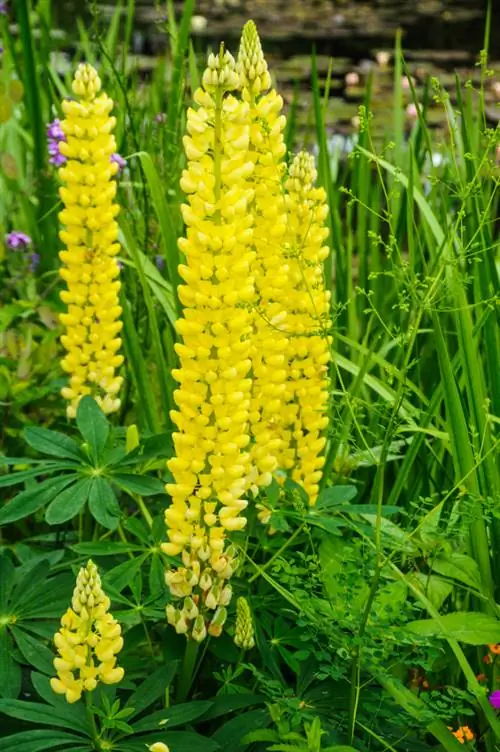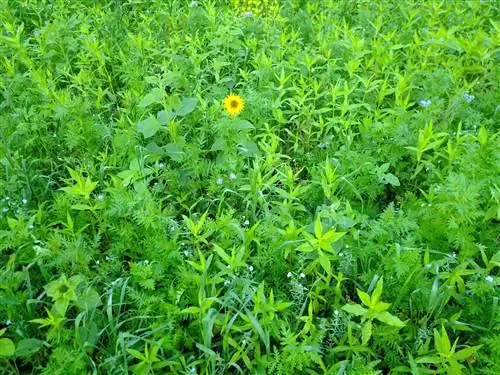- Author admin [email protected].
- Public 2023-12-16 16:46.
- Last modified 2025-01-23 11:20.
Lupins are one of the so-called green manure varieties. However, this applies less to perennials kept as ornamental plants in the garden. Special varieties of lupine are sown for green manure, which are later simply cut and buried.

Why are lupins suitable for green manure?
Lupins are used as green manure for soil loosening, nitrogen enrichment and soil fertilization. Their deep roots loosen the soil while the bacteria in the root nodules produce nitrogen. The cut and buried lupine material decomposes and improves the soil.
Lupins are relatives of peas and beans
The relationship with peas and beans can be recognized by the shape of the pod that the plants form after flowering. Like all legumes, lupins not only develop very long roots. They also live in symbiosis with certain bacteria that are found in nodules on the roots. These bacteria produce nitrogen, which they release into the plant.
This means that lupins grow well even on very sandy and poor soils. They improve the earth sustainably because they release the nitrogen again and thus provide new nutrients.
The effect of lupins as green manure
- Soil loosening by roots
- Nitrogen enrichment of the soil
- Soil fertilization through buried foliage
The roots that lupins develop as green manure can grow up to two meters long. They dig into the ground and loosen it up deeply.
The bacteria in the nodules ensure a good supply of nitrogen initially to the plant and later to the entire soil.
The green manure lupins are cut off after a while and buried in the ground. Both the leaf material and the roots remain in the soil and decay there. This releases nutrients that significantly improve the soil. At the same time they loosen it up well.
Green manure is also possible late in the year
The big advantage of growing lupins as green manure is that the plant is hardy and can also be sown late in the year.
Unlike other green manure plants such as Phacelia (bee willow), the plants do not freeze straight away, but also grow at quite low temperatures.
Lupins are therefore often sown as green manure after harvesting vegetable beds in the vegetable garden.
Tips & Tricks
Lupins are playing an increasingly important role in providing protein through food. They are therefore often grown as a substitute for soy. However, only sweet lupins are suitable for consumption, because the popular ornamental lupine is a poisonous plant.






